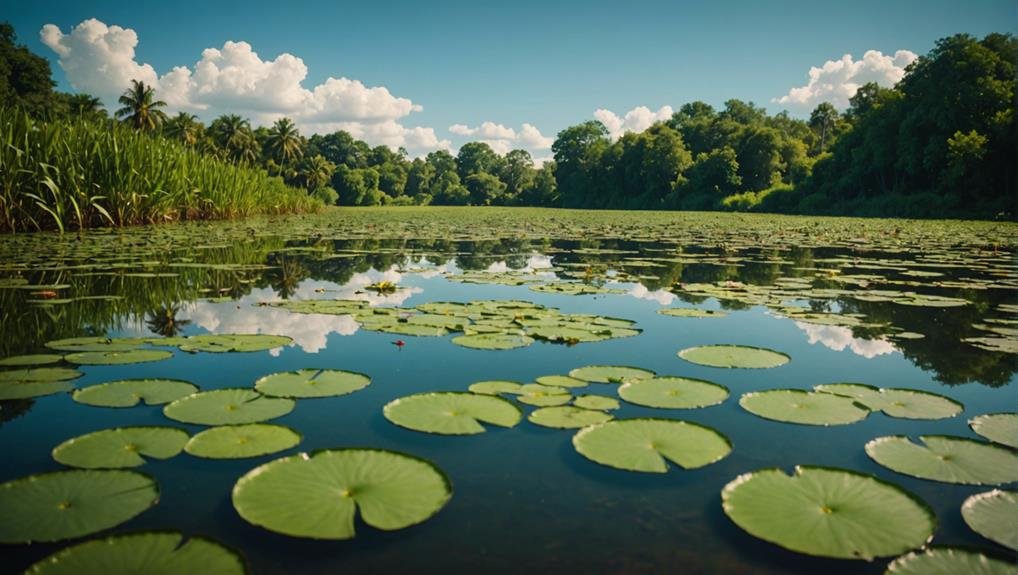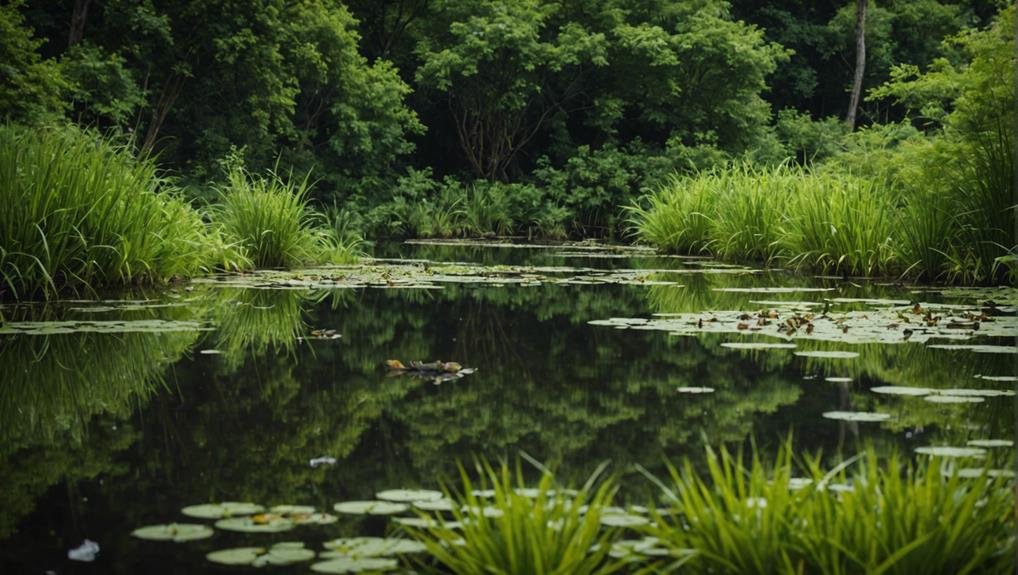Pond ecosystems are fascinating habitats filled with a variety of organisms, from tiny algae to larger plants and animals. These ecosystems create intricate food webs that are crucial for maintaining ecological balance. Specialized species can be found in unique pond environments like kettle ponds and underground ponds, adapted to their specific conditions. Decomposers play a key role at the bottom and margin of ponds, connecting important zones within the ecosystem. Wildlife such as predatory fish, amphibians, and birds thrive in these environments. Conservation and proper management are essential for preserving pond biodiversity and ecological well-being. Dive deeper into the complexity and significance of pond ecosystems to appreciate their importance in the natural world.
Some of the links in this article may be affiliate links. If you make a purchase through these links, we may earn a small commission at no extra cost to you. Thank you.
Types of Pond Ecosystems
Pond ecosystems display a diverse range of types, each with distinct features and ecological importance. Garden ponds, categorized as ornamental or wildlife-focused, play a crucial role in supporting urban biodiversity and require careful upkeep. Freshwater pools are home to a variety of decomposers that are vital for amphibians and insects, benefiting the surrounding terrestrial wildlife. Salt ponds, situated along coastlines, are adaptable to changing salinity levels and provide sanctuary for migratory birds. Ephemeral ponds, forming after rainfall, host intricate food webs and showcase adaptations for withstanding flooding and droughts. Farm ponds, commonly found in agricultural areas, significantly impact water and soil quality, influenced by various management practices. Urban ponds within city landscapes contribute to biodiversity and necessitate conservation measures. Glacier ponds, created by melting glaciers, host unique species adapted to cold environments but are at risk due to climate change.
Unique Pond Environments
Exploring unique pond environments like underground ponds, kettle ponds, and aquaculture ponds unveils fascinating ecological dynamics and specialized adaptations. Underground ponds, found in caves, support unique cave life that has adapted to survive without sunlight. These ecosystems remain relatively unexplored due to their rarity and challenging access. Kettle ponds, formed in plains, derive their distinct features from sediment and microbial influences crucial for nutrient cycling. On the other hand, aquaculture ponds are human-made habitats for breeding aquatic species, each tailored to specific species' needs and requiring strict bio-security measures for optimal health and productivity maintenance.
Key Features of Pond Ecosystems

Pond ecosystems are teeming with a diverse array of organisms, ranging from microscopic algae to larger plants and animals, creating intricate food webs essential for ecological balance. The pond bottom provides a habitat for decomposers, while the water column supports various aquatic life forms. Light penetration and gas exchange are influenced by the pond surface, crucial for photosynthetic organisms. Additionally, the pond margin plays a vital role as a connection zone between aquatic and terrestrial ecosystems, contributing significantly to overall biodiversity.
Pond Ecosystem Wildlife
Pond ecosystems are bustling with a variety of wildlife, from colorful dragonflies flitting around to secretive amphibians lurking beneath the water's surface. These habitats support numerous species interactions that are crucial for maintaining a balanced ecosystem. Predatory fish prey on smaller creatures, while frogs and newts rely on ponds for breeding. Birds also frequent ponds to feed on insects and fish, showcasing the interconnectedness of different species in this dynamic environment. Microorganisms further contribute by breaking down organic matter and supporting nutrient cycles. Understanding and appreciating these intricate species interactions highlight the complexity and significance of pond ecosystems.
Conservation and Management

Conservation and management practices are crucial for preserving the ecological balance and biodiversity of pond ecosystems. Adopting sustainable methods such as reducing chemical runoff and promoting native species is essential for maintaining biodiversity. Habitat restoration initiatives can revitalize degraded pond areas, ensuring they can support a variety of wildlife. Community engagement also plays a vital role, as local participation fosters a stronger commitment to preserving these ecosystems.
Conclusion
Ponds, whether they are small garden ponds or glacier pools, are home to a diverse range of life, from tiny decomposers to majestic migratory birds. These ecosystems play a vital role in supporting urban biodiversity and agricultural landscapes. Pond owners play a crucial part in caring for these habitats. Understanding how organisms adapt to changing environments and the impact of human activities and climate change is key to conservation efforts. By preserving these aquatic ecosystems, we protect the delicate balance of our natural world.

